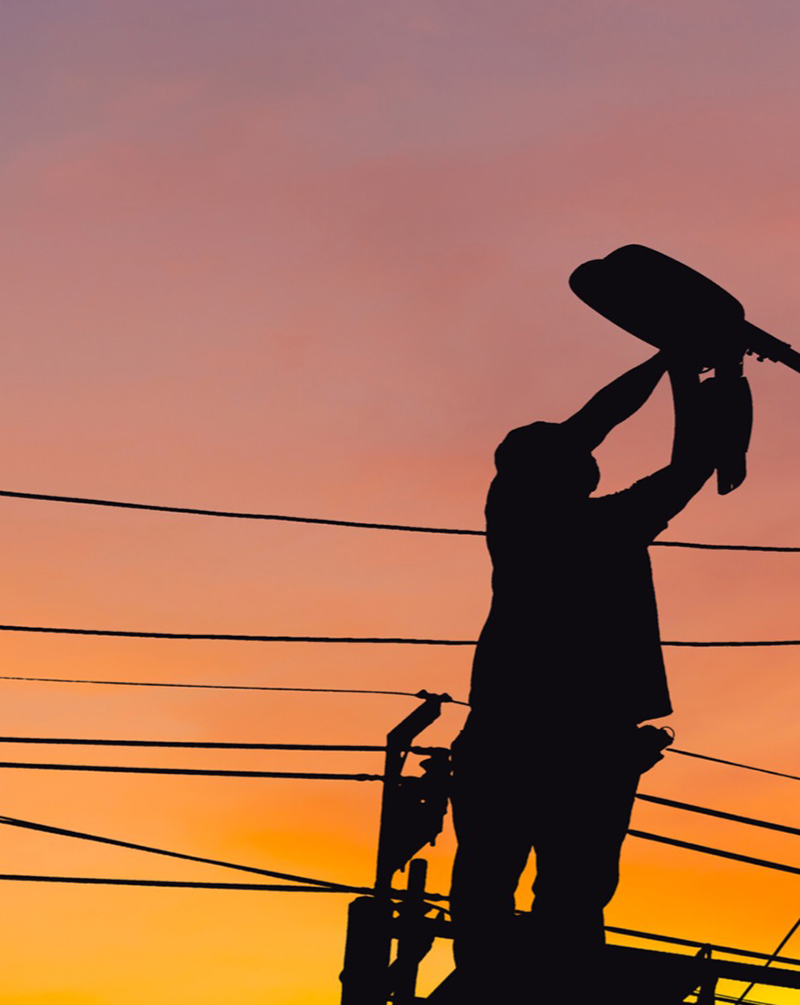Commercial Lighting Installation
Installing commercial lighting requires careful planning and execution to ensure optimal functionality, safety, and energy efficiency. Following is a step-by-step guide to help you with the commercial lighting installation process or a refresher for professionals in what you do every day.




Assess Lighting Needs
Begin by evaluating the specific lighting requirements of the commercial space. Consider factors such as the purpose of the area, desired lighting levels, color temperature, lighting controls, and any specific lighting regulations or standards that need to be met.
Develop a Lighting Plan
Create a detailed lighting plan that outlines the layout, fixture types, and placement of lights. Consider the architectural design, functional requirements, and aesthetic preferences. A lighting designer or engineer can assist in creating an effective plan.
Select Lighting Fixtures
Choose appropriate lighting fixtures that meet the needs identified in the lighting plan. Consider factors such as efficiency, durability, maintenance requirements, and compatibility with lighting controls. Ensure compliance with local electrical codes and safety standards.
Plan Electrical Wiring
Determine the electrical requirements for the lighting installation. Assess the existing electrical system and identify if any upgrades or modifications are necessary. Plan the routing of electrical wiring, ensuring proper circuiting and load balancing.
Obtain Necessary Permits
Check with the local building authority to determine if any permits or approvals are required for the installation. Follow the necessary procedures and obtain the appropriate permits before proceeding with the work.
Prepare the Workspace
Clear the workspace of any obstacles or hazards that may hinder the installation process. Ensure a safe working environment and provide suitable access to electrical panels and other necessary equipment.
Install Wiring and Electrical Components
Begin by installing the necessary wiring, conduits, and junction boxes based on the electrical plan. Follow industry best practices and local electrical codes to ensure proper wiring connections, grounding, and protection against electrical hazards.
Mount Lighting Fixtures
Install the lighting fixtures according to the lighting plan. Securely mount them in the designated locations, ensuring proper alignment and stability. Pay attention to spacing and consider any specific requirements for each type of fixture.




 Connect & Test Wiring
Connect & Test Wiring
Connect the wiring to the lighting fixtures and verify the integrity of the electrical connections. Use appropriate connectors and follow manufacturer guidelines. Perform thorough testing to ensure all connections are secure and functional.
 Verify Proper Operation
Verify Proper Operation
Once the installation is complete, test the lighting system as a whole. Check for proper functionality, including on/off switching, dimming (if applicable), and any programmed control sequences. Address any issues or malfunctions promptly
 Provide User Training
Provide User Training
Once the installation is complete, test the lighting system as a whole. Check for proper functionality, including on/off switching, dimming (if applicable), and any programmed control sequences. Address any issues or malfunctions promptly
 Install Lighting Controls
Install Lighting Controls
If applicable in your specific project, install lighting control systems such as dimmers, motion sensors, or programmable timers. Follow the manufacturer’s instructions and integrate the controls into the electrical system effectively.
 Conduct Final Inspection
Conduct Final Inspection
Coordinate a final inspection with the property owner the local building authority or electrical inspector as required. This is to ensure the work meets compliance with applicable codes and regulations. Rectify any identified issues before obtaining a final approval.
 Document Your Installation
Document Your Installation
Maintain detailed documentation of the installation, including plans, specifications, equipment manuals, and any modifications made to the electrical system. This information will be valuable for future reference, maintenance, and upgrades.
Commercial lighting installation may involve complex electrical work. If you are not experienced or comfortable with a particular type of installation, we recommended hiring a professional electrician or lighting contractor to ensure a safe and efficient installation process.
Finally, outstanding installations require those with the right know-how and quality lighting equipment and accessories from the right suppliers, such as Commercial Lighting Specialties. Let us help you with your next project. Contact us…


 Connect & Test Wiring
Connect & Test Wiring Verify Proper Operation
Verify Proper Operation Provide User Training
Provide User Training Install Lighting Controls
Install Lighting Controls Conduct Final Inspection
Conduct Final Inspection Document Your Installation
Document Your Installation